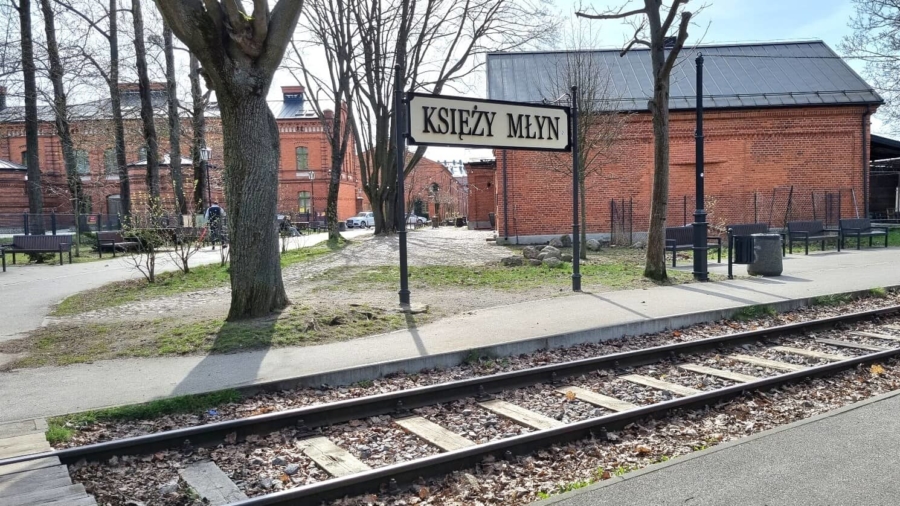During my time living and working in Łódź from January 2012 to January 2013, I was certainly aware of the existence of the Księży Młyn factory complex. However, I completely dismissed it in my mind for being a neglected, run-down, red brick housing estate similar to those you find in Silesia.
Frankly, I only recall taking a short stroll along Tymienieckiego Street – the main artery of Księży Młyn and one of the oldest streets in the Śródmieście and Widzew districts. For some reason beyond my comprehension, I didn’t venture into the very heart of Księży Młyn back in 2012-13. Revitalisation of the Księży Młyn factory complex commenced at the end of 2012. During my visit to the area in March 2024, I was able to see this distinctive factory and residential complex in all its revitalised glory.
The Księży Młyn Factory Complex – In a nutshell
The Księży Młyn factory and residential complex is the largest historic factory complex in Łódź. It was constructed in the 19th century on the Jasień River on the site of a former mill settlement belonging to a local priest (hence the name Księży Młyn – Priest’s Mill). Essentially, Księży Młyn was a complex of textile factories – mainly cotton spinning mills.
The urban complex of Księży Młyn was developed in the 1870s by Karol Wilhelm Scheibler, who came to the Kingdom of Poland in 1848 and settled in Łódź in 1854.
Sowing the Seeds of Scheibler’s “City Within a City”
Księży Młyn was first mentioned in 1484 in reference to a mill built on the Jasien River in 1387. The site grew in size over the years as it passed from family to family. Then, the invading Prussians took control of the site in 1793. The original complex was burnt to the ground on May 9, 1822.
While it’s true that Scheibler’s enterprise – Księży Młyn – developed on an unprecedented scale from the early 1870s onwards, sources tend to attribute the year 1824 to the earliest development of the area of Księży Młyn.
It was in 1824 that the authorities of the Kingdom of Poland granted permission to German manufacturer Krystian Wendisch to open a cotton mill. The following year, Wendisch received a perpetual lease of the area on the Jasień River along with Księży Młyn and Wójtowski Młyn. In return, Wendisch undertook to build a cotton mill on the site within two years, as well as a flax mill over a longer period of time. The cotton plant was operational by 1827. It was located in the largest three-story building in Łódź at the time. Wendisch ran into serious financial difficulties and died of a heart attack on January 21, 1830.
After Wendisch’s death, the mill was handed over to the state. It operated for a further 12 years until modern steam-powered competition forced it to close down.
In 1850, Fryderyk Karol Moes, on the back of establishing other factories and enterprises in the Łódź/Zgierz area in the 1830s and 1840s, founded a cloth factory on the site of the run-down spinning mill left by Krystian Wendisch. Switching to steam in 1854, Moes produced high-quality cotton with the help of 85 employees. However, the rapid development of the company slowed down due to the so-called cotton famine of 1861 and the ensuing crisis it caused. Poland’s textile industry reached crisis point in the years 1861-64, meaning the factory had to cease operations once more. In 1863, the Moes cloth factory burned down in a fire, and shortly afterwards Fryderyk Moes himself died.
Fryderyk’s widow sold his factory to Teodor Krusche in 1865. Teodor Krusche was the son of Beniamin Krusche, a manufacturer from Pabianice. With the factory reopening once more in 1868, another fire in 1870 interrupted production activities. In the same year, Karol Scheibler bought the devastated factory and the entire estate comprising Księży Młyn and Wójtowski Młyn.
Karol Scheibler – Early Years in Łódź and the Development of Księży Młyn
In 1852, Karol Scheibler began to develop a series of cotton factories in Łodz. Scheibler originally shared a plot of land with his partner, Julius Schwartz. In October 1854, Scheibler purchased Schwartz’s share in the machinery factory they started to build in 1852, thus handing Scheibler sole ownership of the factory.
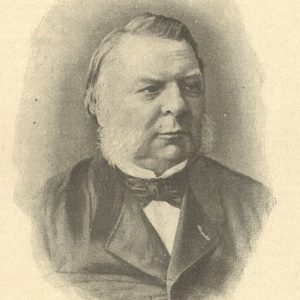
The first mechanised cotton spinning mill Scheibler built was at the site of the former Water Market (Wodny Rynek) – today Plac Zwycięstwa – in 1855. The mill contained 34 spinning frames as well as a 40 horsepower steam engine. Spanning 168 hectares, it was one of the biggest factories in the world at the time. In 1858, the spinning mill was adjoined by a weaving mill housing 100 mechanical looms. Another notable piece of construction was the workers’ houses in 1865-68 on the north side of the Water Market.
Returning briefly to the Cotton Famine in the early 1860s. Some spinning mills halted production as early as 1861 owing to the lack of raw cotton. Factory workers lost jobs and small and middle-sized factories were eliminated. Scheibler had massive cotton reserves. Therefore, his factory remained unaffected. Furthermore, the speculative trade in raw cotton made Scheibler the wealthiest of mill owners in Łódź. He was well-placed to erect the biggest mill in the city – Księży Młyn.
In October 1870, Scheibler purchased the aforementioned burnt-out factory previously owned by Krusche and set about transforming a site which covered an area of 500 hectares. Scheibler plotted to develop a self-sufficient “city within a city” modelled on English industrial settlements. This was the Księży Młyn factory complex.
It was in 1873, that Scheibler’s new spinning mill – Księży Młyn – was completed. It originally housed around 70,000 spindles and 1,200 looms.

The expansion of Księży Młyn after the fire of 1874
In 1874, a fire destroyed the main mill at Księży Młyn. This certainly didn’t discourage Scheibler as he ploughed more money into what was rapidly transforming itself into a “city within a city”.
One of the most noticeable areas of development within Scheibler’s enterprise was the workers’ houses (famuły). In the 1860s and 1870s, these “famuły” had already sprung up on the north side of the Water Market and next to the main spinning mill. Walczak (2001, p.4) reveals more about the development of workers’ houses in the 1870s:
Along the axis … two rows of workers’ houses were erected, while the third one was located along the western frontage of Przędzalniana Street. Altogether there were 18 two-storey workers’ houses in three rows built in the years 1873-79. Auxiliary buildings (coal sheds, laundries, etc.) were located behind the houses, as were the dwellers’ allotments.
Not forgetting the fact that the main mill was rebuilt after the fire of 1874, a number of other facilities were constructed in the 1870s and 1880s. These included warehouses, a fire station (1884), a hospital (Szpital im. św. Anny), a school (1875), a park with a pond, a village shop (1882), owners’ residences, and a gasworks to light the factories and the surrounding workers’ houses. It was the first private gasworks in Łódź. Finally, Scheibler added a rail siding in 1878, thus connecting the Księży Młyn factory complex with the city’s main train station.
In 1879, a new section was added to the original spinning mill, housing a spinning division of 25,000 spindles and a weaving division of 525 mechanical looms.
Moving from the 1880s into the twentieth century
Karol Scheibler died on 13 April 1881 in Łódź. However, his death didn’t slow down the growth of the Księży Młyn urban complex.
In the years 1884-85 and 1886-90, a number of workers’ houses were constructed along Fabryczna and Przędzalniana Streets, next to Źródliska Park. Further workers’ houses were built at the end of the 19th century along Emilii Street (present-day Tymienieckiego Street) and along Przędzalniana Street again at the beginning of the 20th century.
According to Walczak (2001, p.5):
By 1912, there were some 80 workers’ houses distributed over … Scheibler’s premises providing … accommodation for ⅓ of the company workforce within some 1,200 flats.
Księży Młyn also offered cultural resources for the mill workers. For instance, workers had access to a casino from 1885. In addition to combining a dining room and a place of recreation, this facility became home to a factory brass band, a library, a dancing hall and a restaurant. From the turn of the 1880s and 1890s, a large garden held various functions, chiefly brass band concerts. The first theatre for workers in Poland also opened in Księży Młyn.
Perhaps the main development within the Scheibler enterprise after Karol Scheibler’s death was the amalgamation of the Scheibler factory complex and the Grohmann factory complex in 1921. The founder of the Grohmann company was Traugott Grohmann. His complex, which was modernised and extended by his sons, contained a mill, an owner’s residence and adjoining workers’ housing. The newly-established Scheibler & Grohman company was the largest textile enterprise in Poland and one of the largest in Europe.
The Revitalisation of Księży Młyn
The modernisation of the Księży Młyn factory complex has given this historic estate a new lease of life. Throughout many years of work lasting over a decade, as many as 47 buildings were thoroughly renovated. They include a housing estate of former workers’ houses and farm buildings. As part of the project, the surrounding green areas and yards were tidied up and developed. Apartments, art studios and commercial premises were also built.
The first stage of work on the revitalization of Księży Młyn began at the end of 2012. Initially, the investment included the renovation of two houses at ul. Księży Młyn Street 4 and 6. The underground infrastructure – water and heating networks, storm sewage and drainage – was also replaced.
My post about the regeneration of Łódź City Centre touches upon the transformation of Księży Młyn from a small settlement to a mighty industrial centre.
With the help of city funds and, above all, an EU subsidy of PLN 40 million, the second, much larger stage of work was launched. It included the renovation and reconstruction of 29 buildings, including multi-family and farm buildings located on the following streets: Księży Młyn, Przędzalniana and Fabryczna. In addition, non-residential buildings and former consumer buildings along the three aforementioned streets were restored, as was a non-residential building located at Tymienieckiego 32 / Księży Młyn 2.
Apartments have been equipped with a separate kitchen or kitchenette and a bathroom. The yards have also been rebuilt and enriched with new greenery, including trees, bushes, vines, flower beds and lawns. It’s striking how the aesthetics of public spaces have been improved. There are new benches, bicycle racks, waste and dog waste bins and water pumps. Moreover, internal roads and a pedestrian and bicycle path have appeared in the area of the former railway siding.
Księży Młyn in Pictures
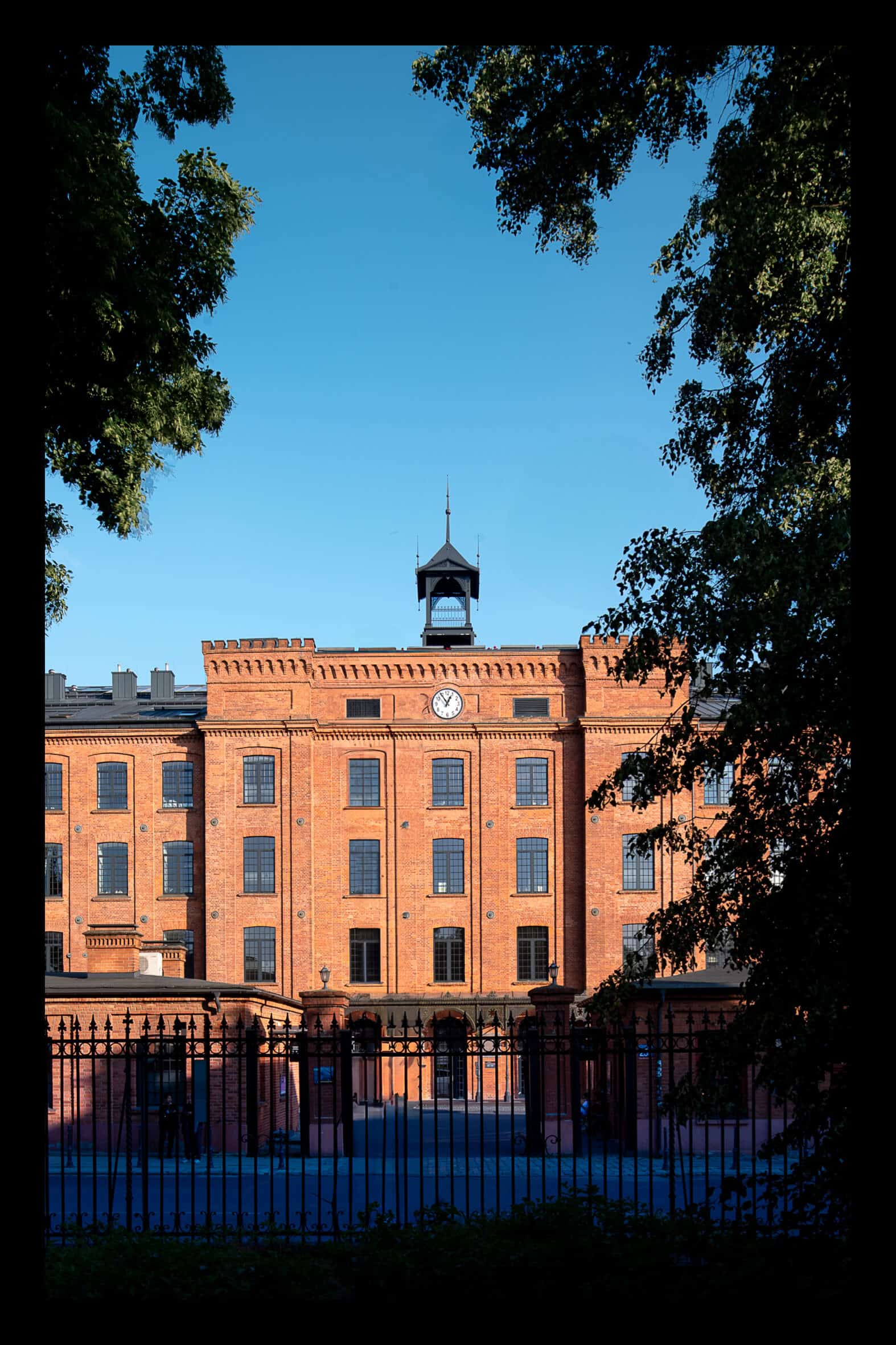
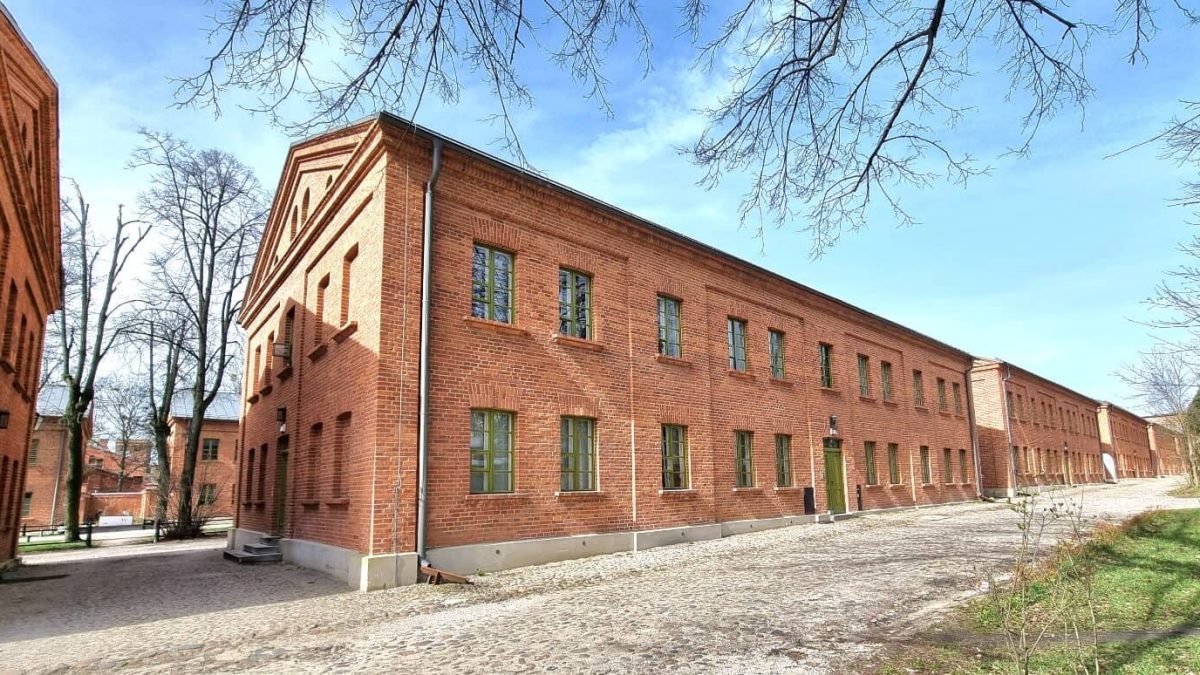
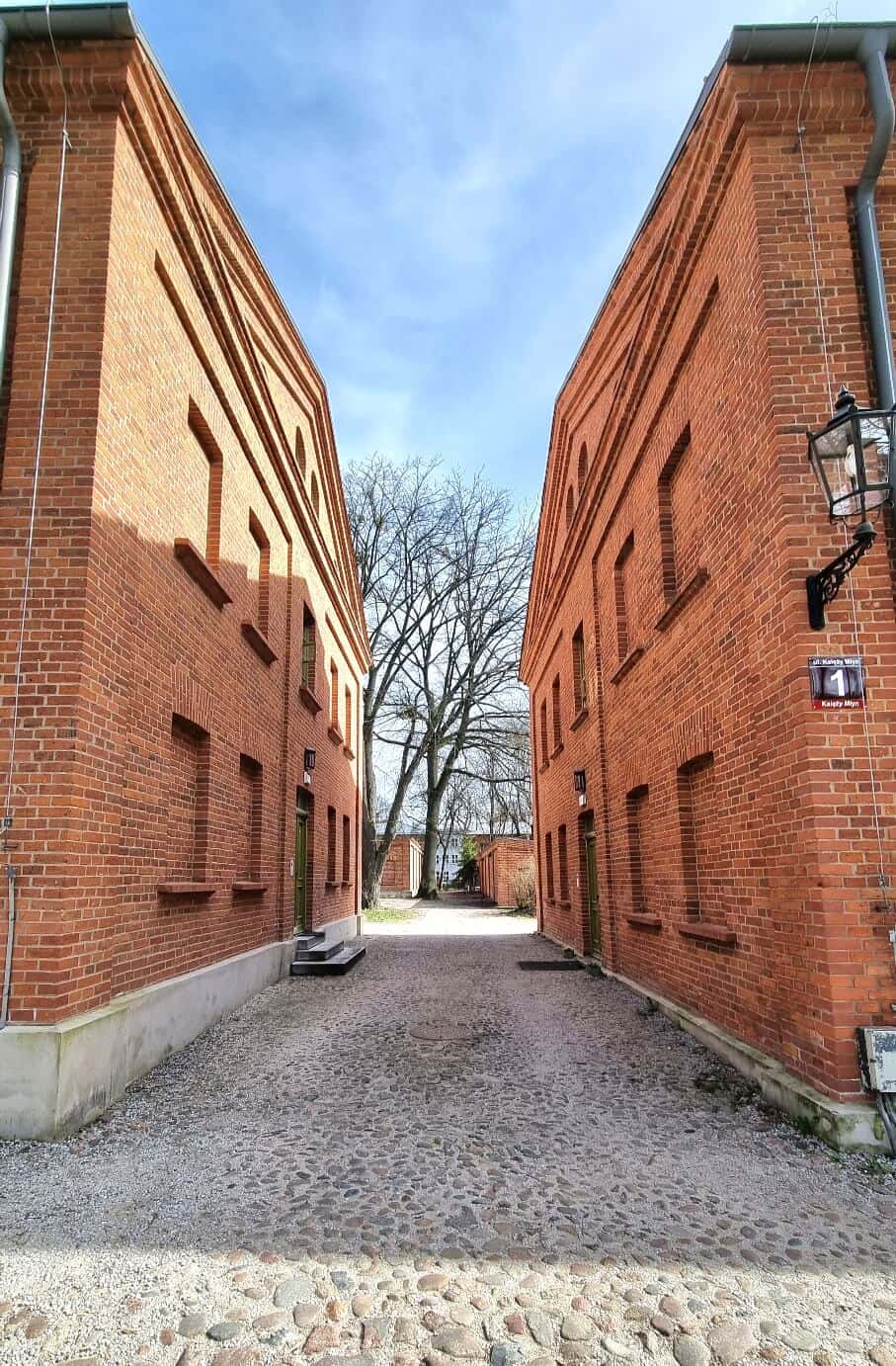
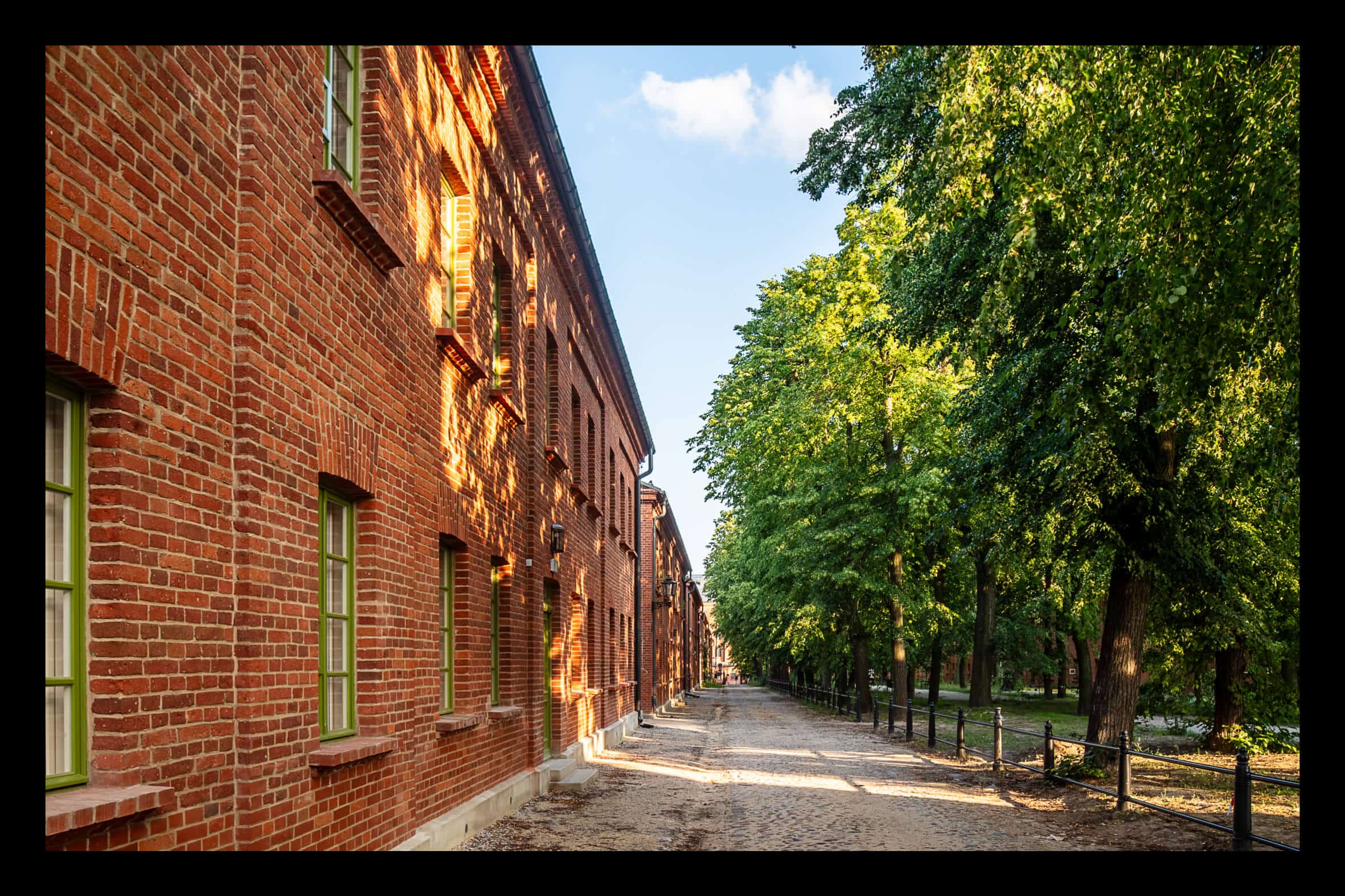
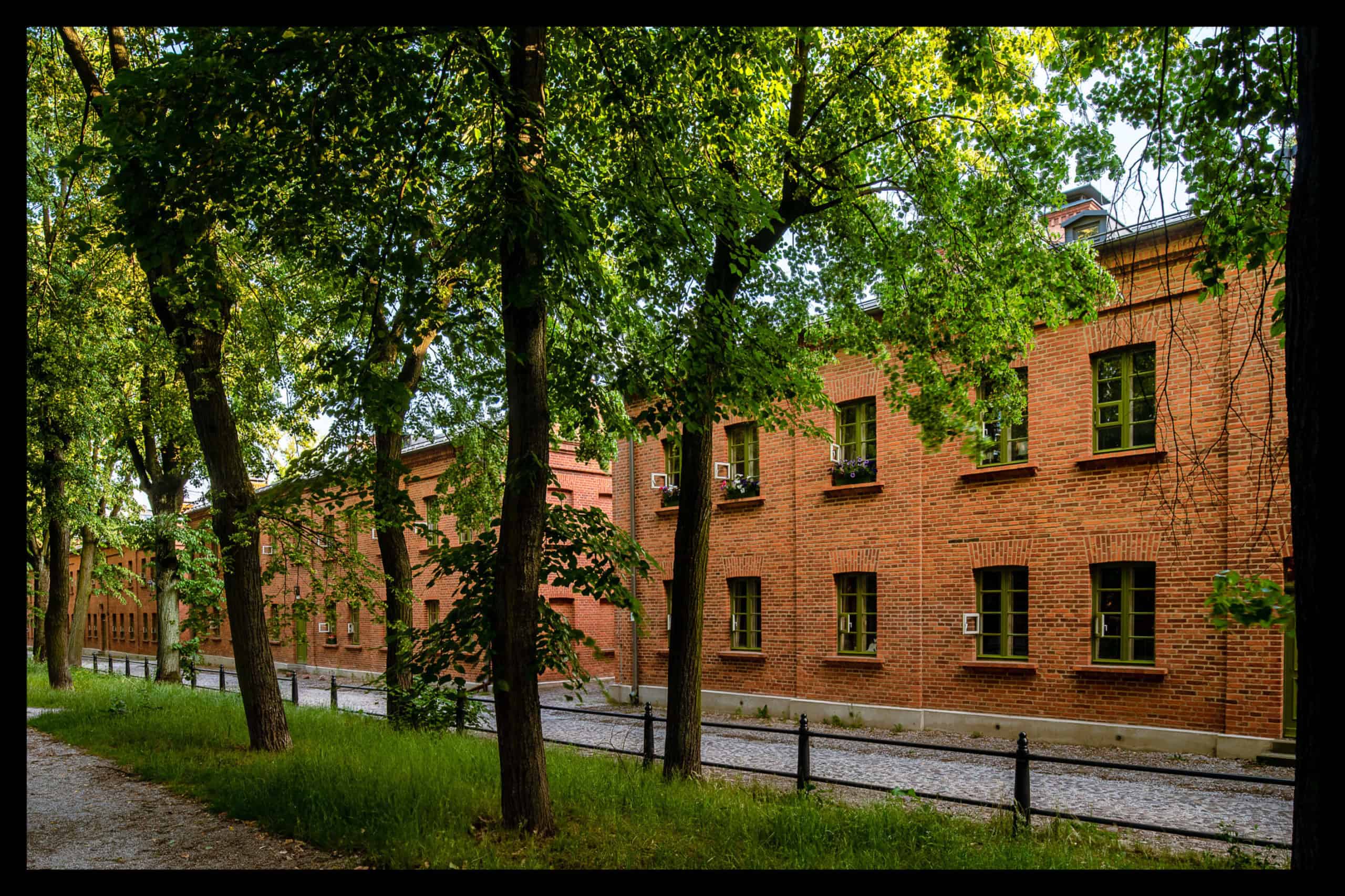
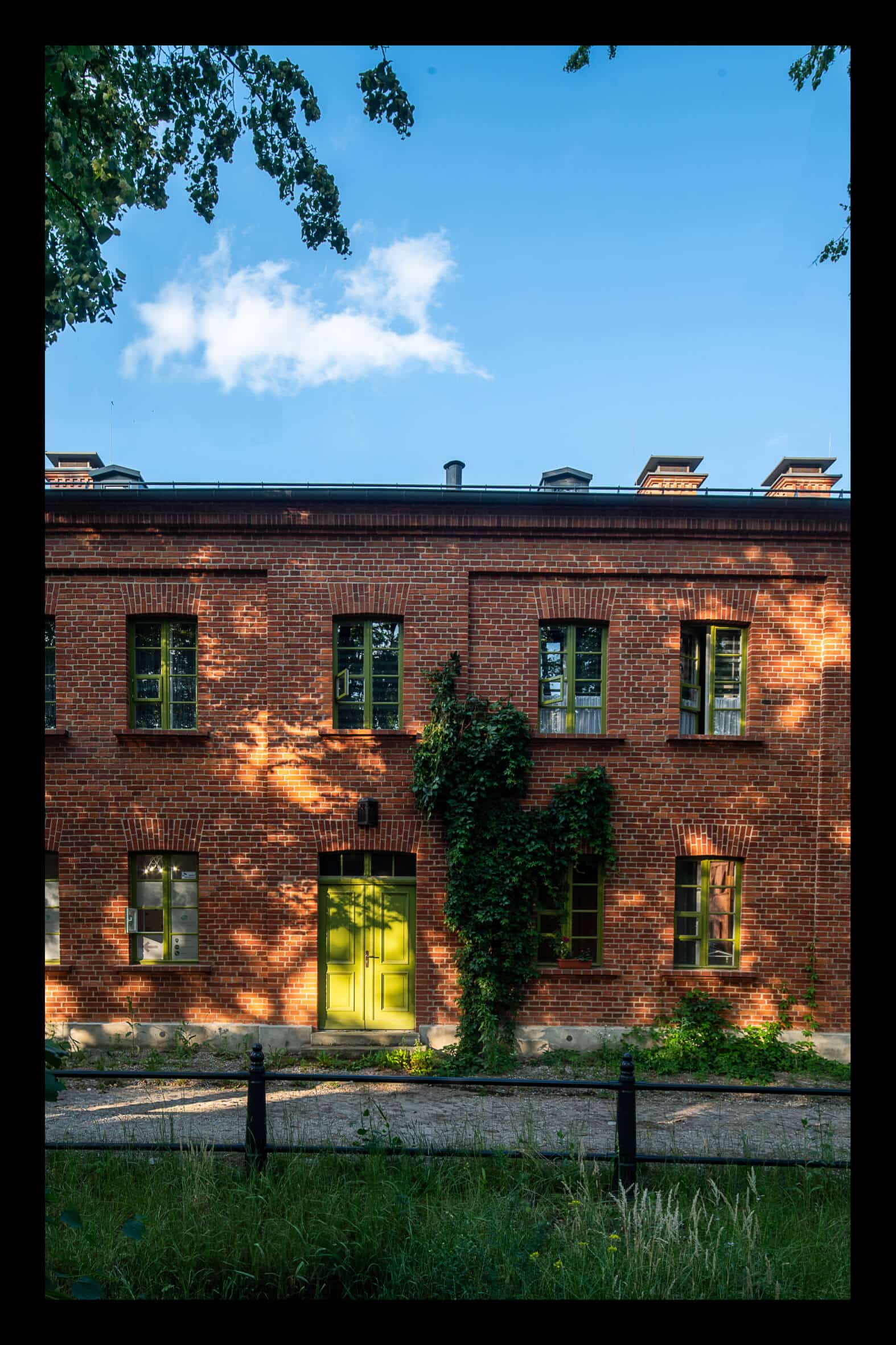
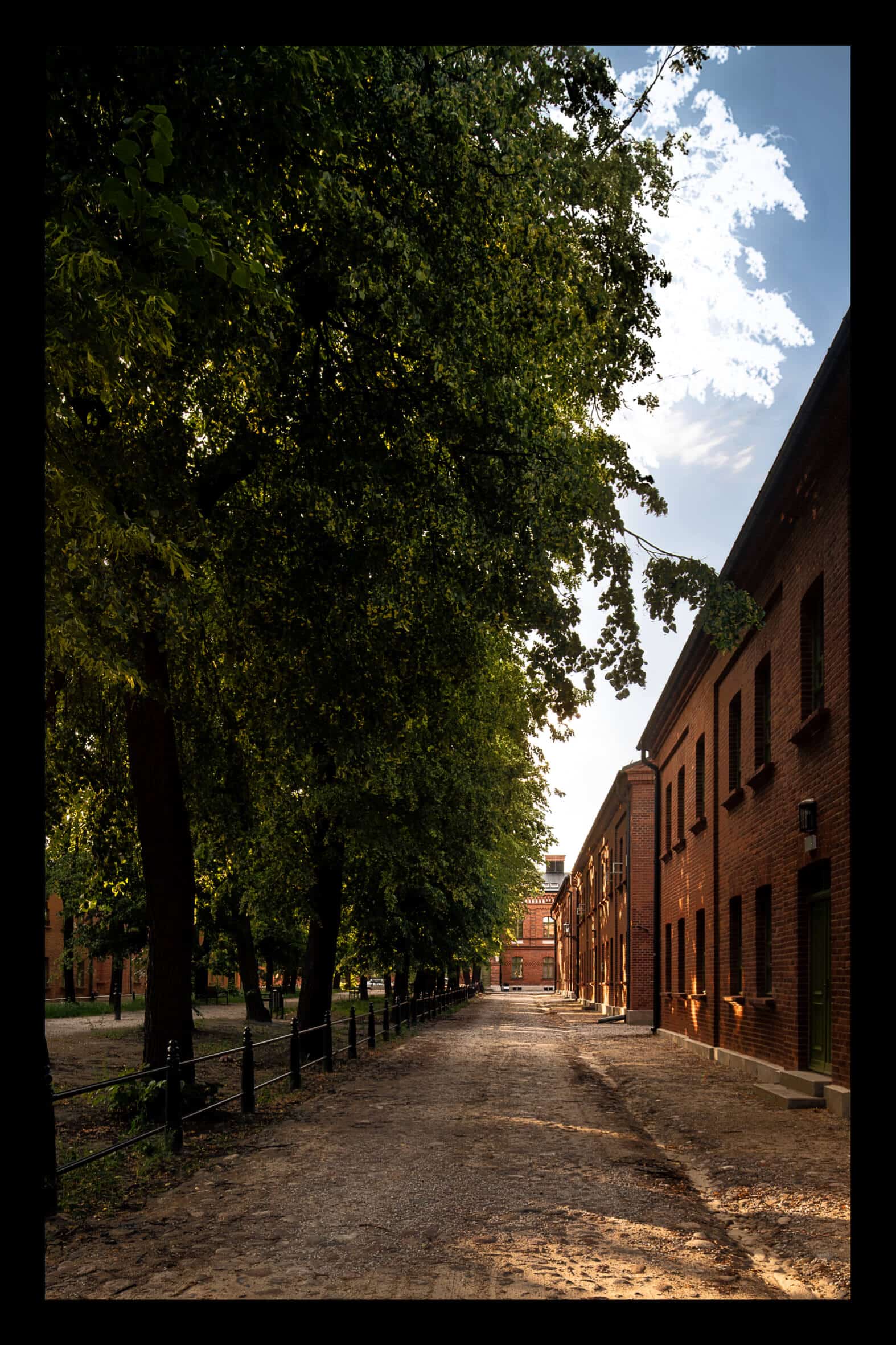
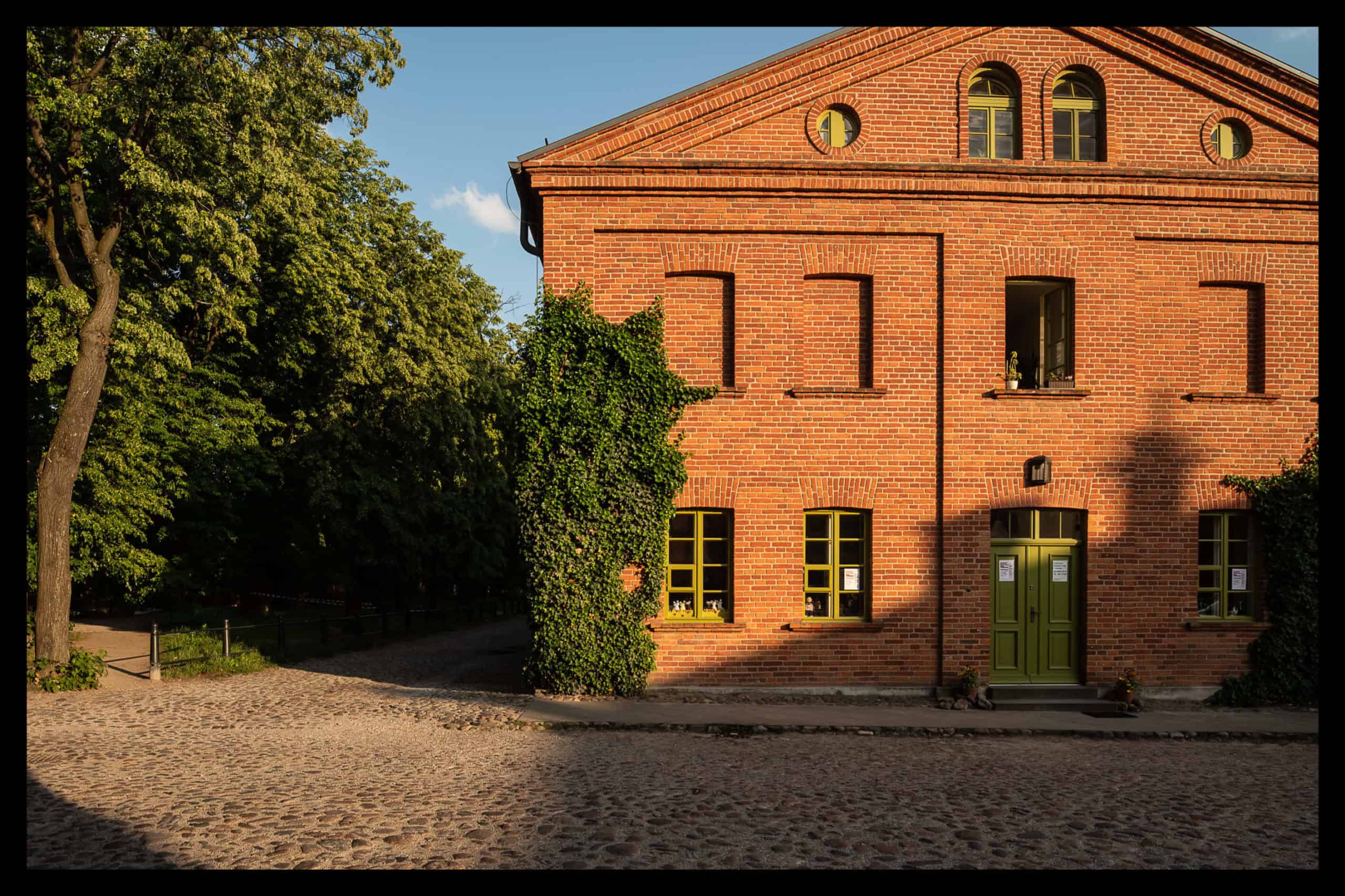
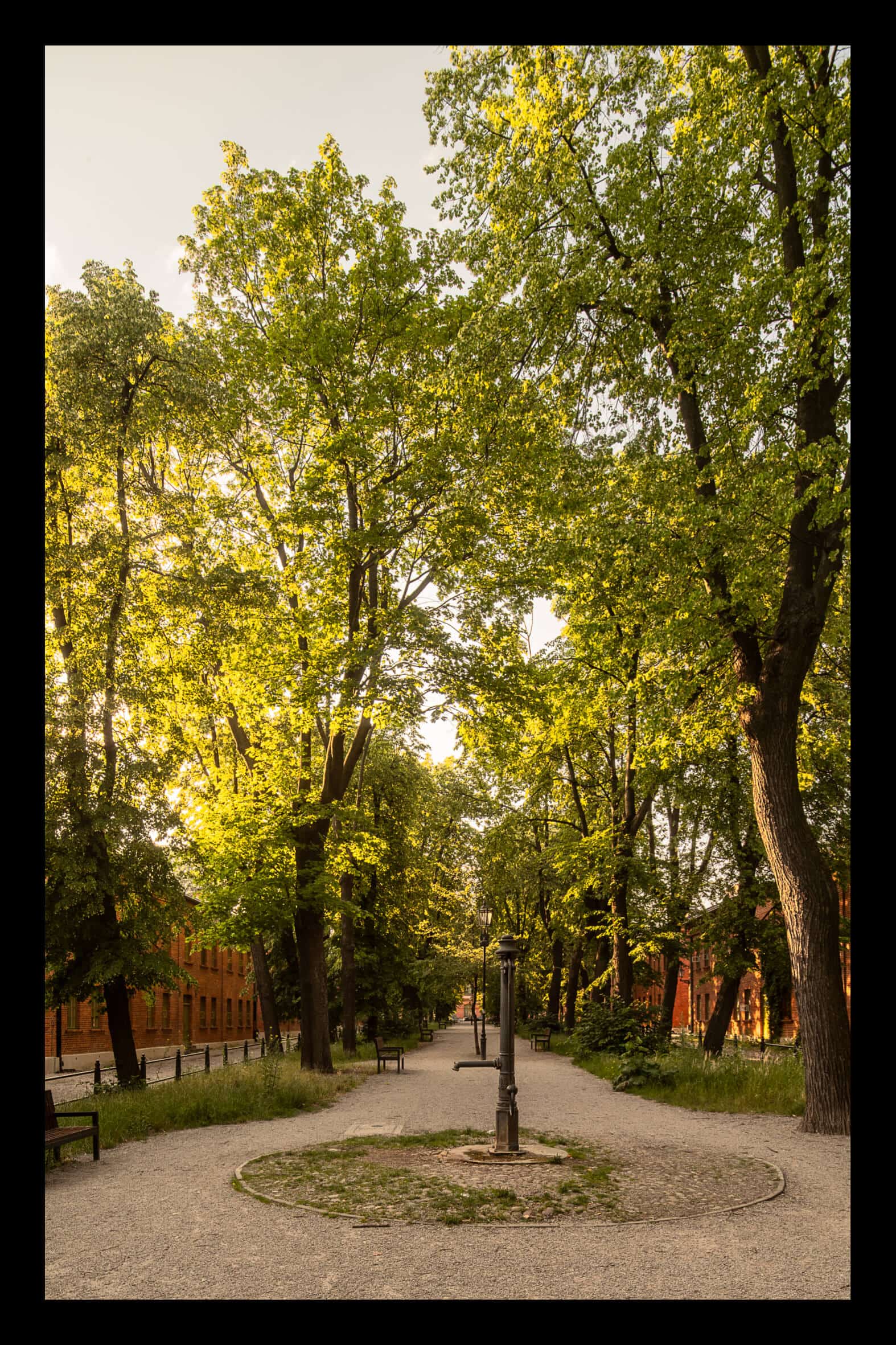
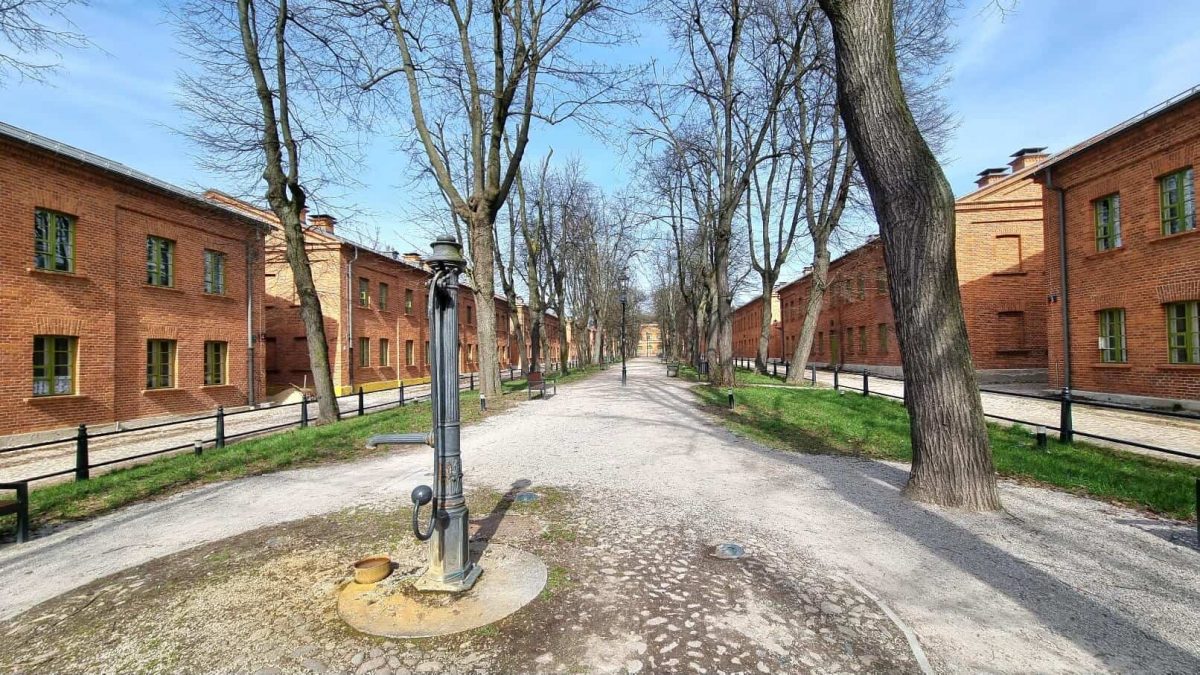
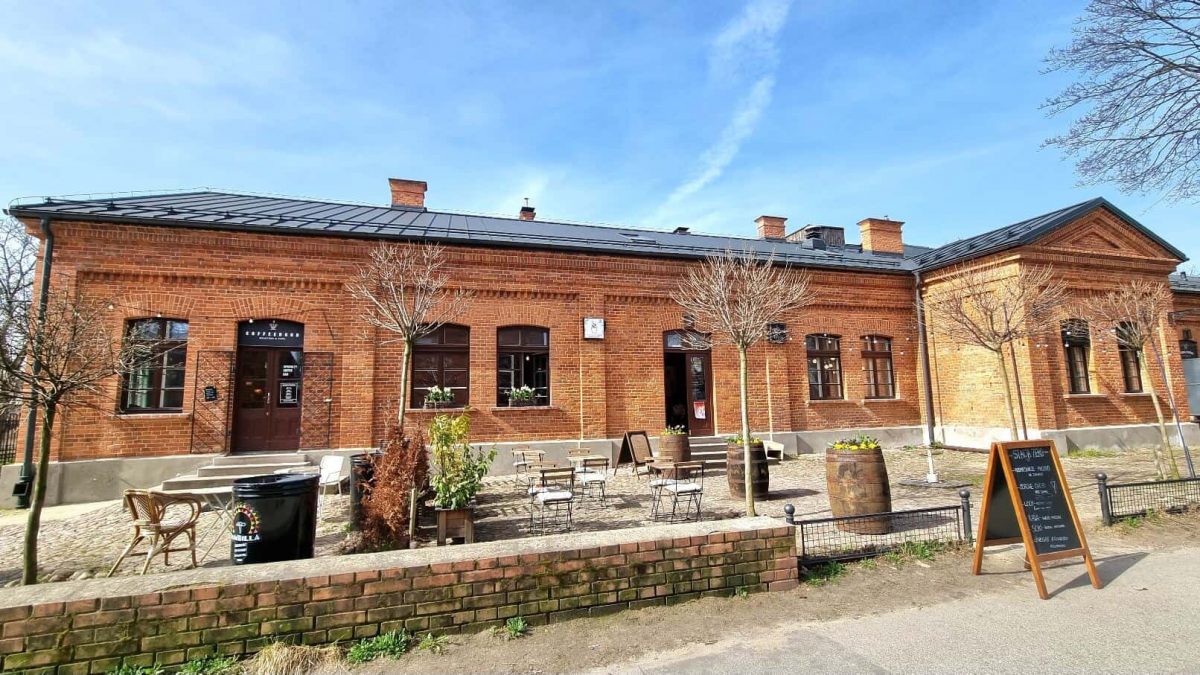
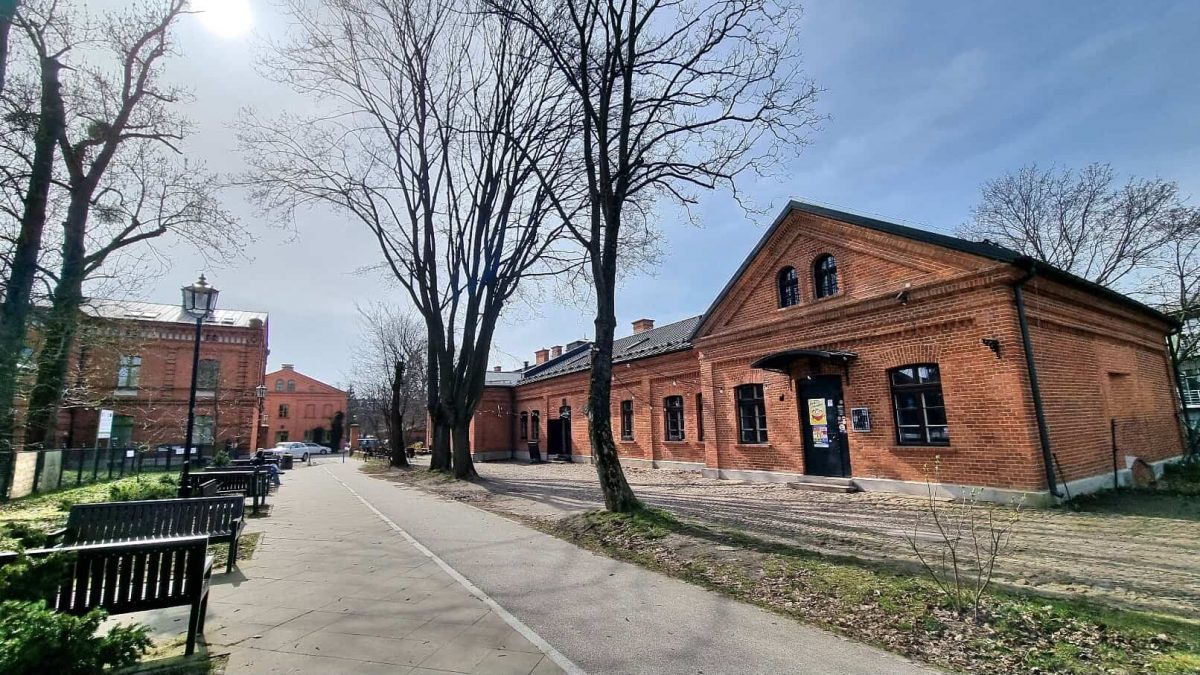
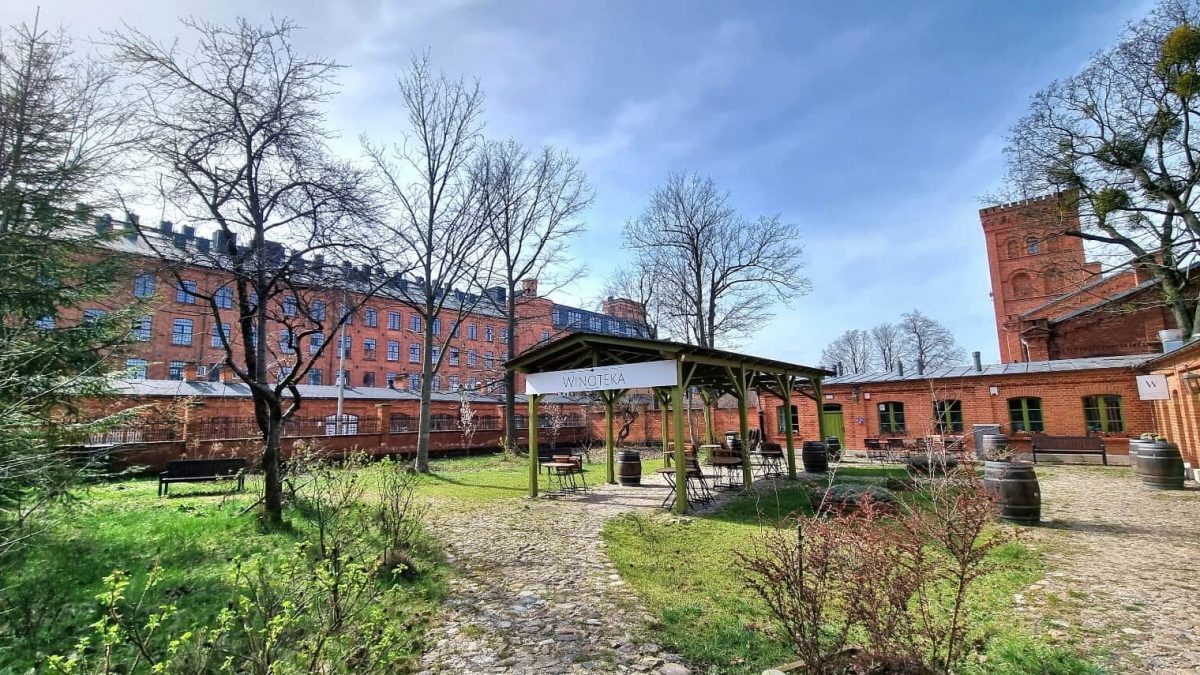
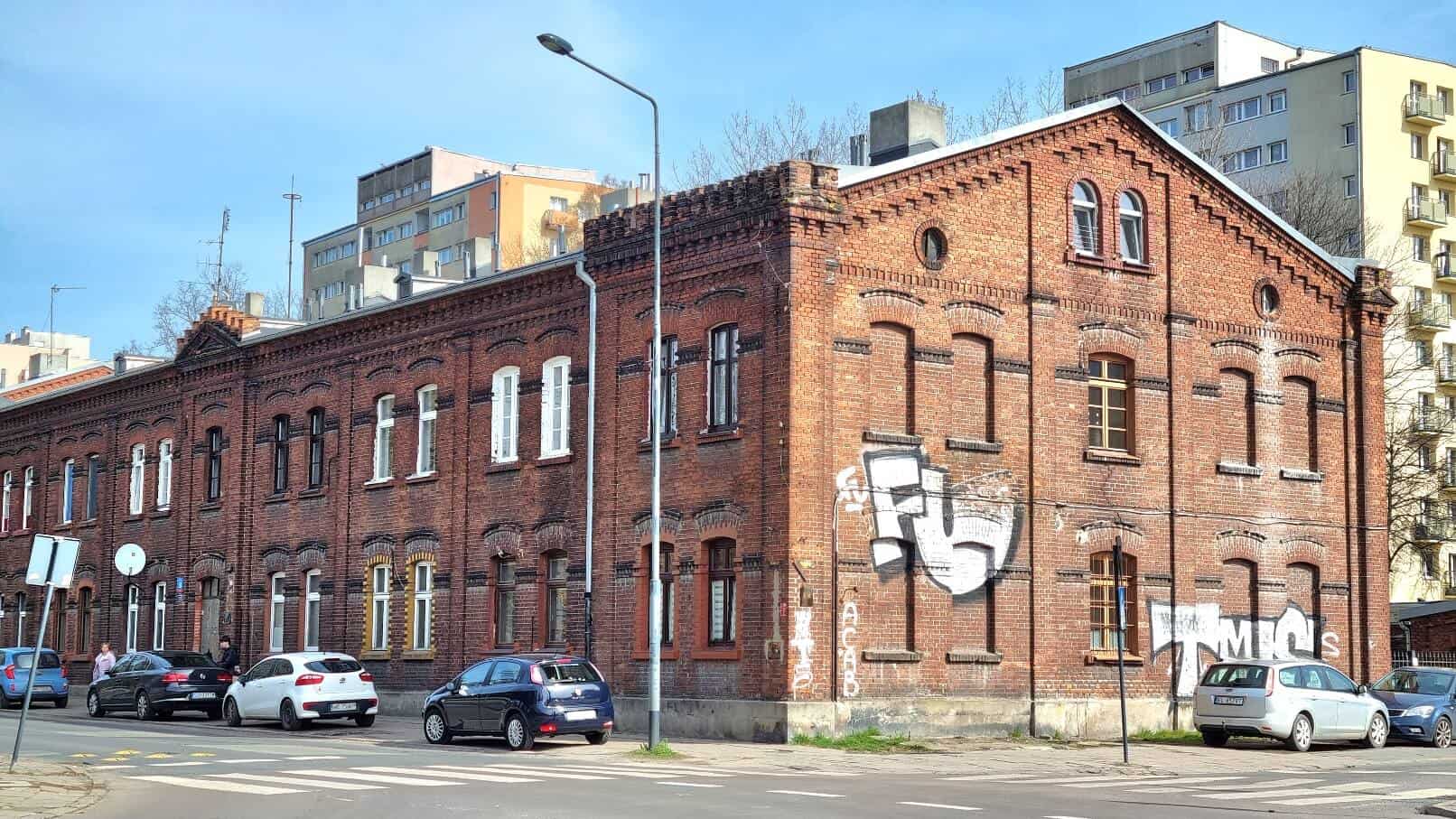
Worth visiting in Księży Młyn
It should already be clear from the pictures above that Księży Młyn has experienced a second youth. Apart from observing renovated factory spaces, workers’ houses and the renovation of green areas and yards, tourists can also visit the following two museums:
1. Karl Wilhelm Scheibler’s Palace: Museum of Cinematography (Muzeum Kinematografii w Łodzi)
The building which houses the Museum of Cinematography was built in 1856 and was formerly the palace of Karl Wilhelm Scheibler.
Since 1986, the palace has housed the Cinematography Museum. It presents exhibits related to the history of cinema and its connections with Łódź. Among them, it is worth paying attention to the historic photo plasticon, a collection of film posters and an exhibition devoted to children’s films.
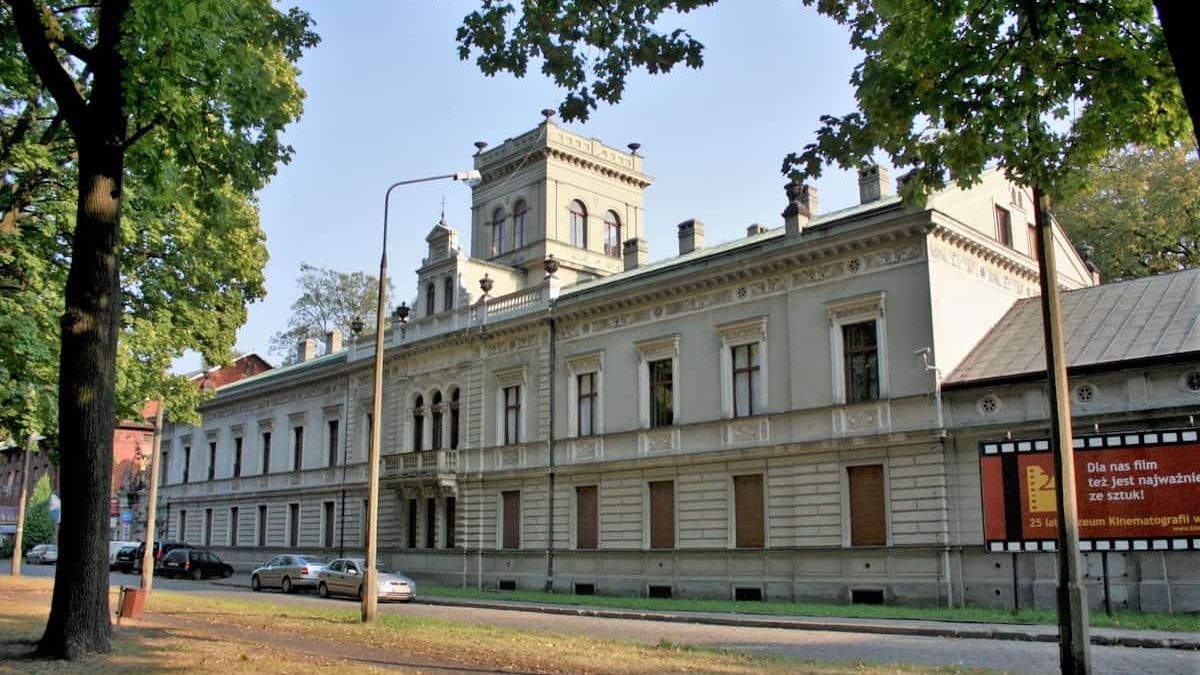
2. Edward Herbst Palace Museum (Muzeum Pałac Herbsta)
Close to the main factory on the other side of Przędzalniana Street, there is a palace that was built for Karol Scheibler’s son-in-law – Edward Herbst and his wife Matylda Zofia. Built in 1875-1877, the palace served a residential and representative function. Descendants of the Herbst family lived there until World War II.
Currently, the palace houses the Herbst Palace Museum which presents interiors from the late 19th century. As a branch of the Museum of Art in Łódź, visitors are able to observe a rich collection of Polish and European paintings.
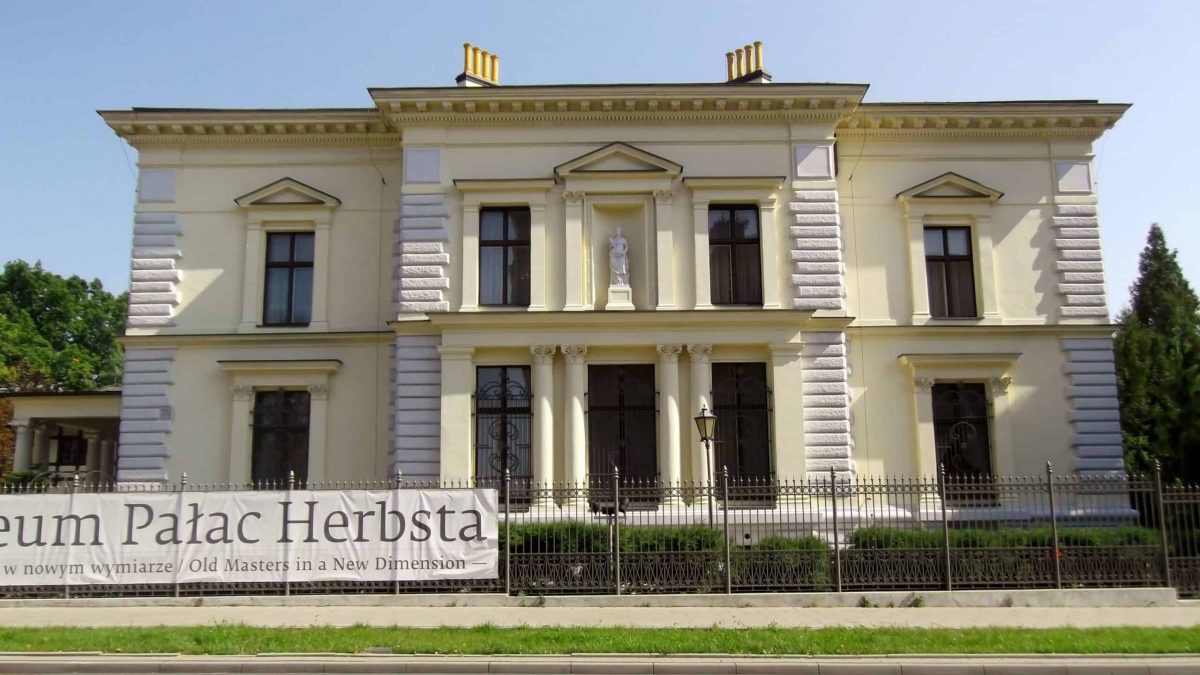
Reference:
Walczak, B.M. (2001). Księży Młyn Textile Village – The Scheiblers’ Jewel In The Crown, Industrial Patrimony – Resources, practices, cultures, 6/2001, pp. 17-24

